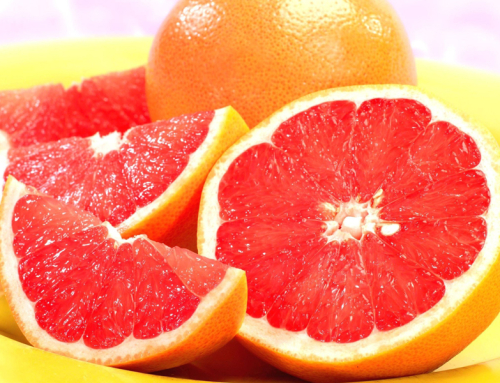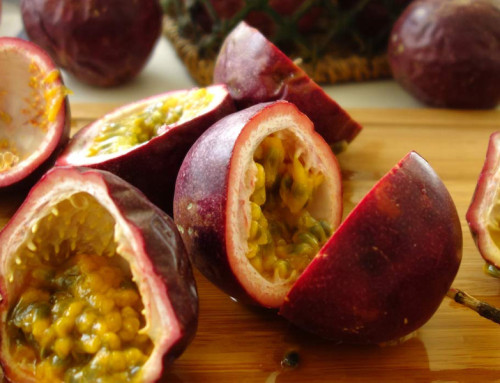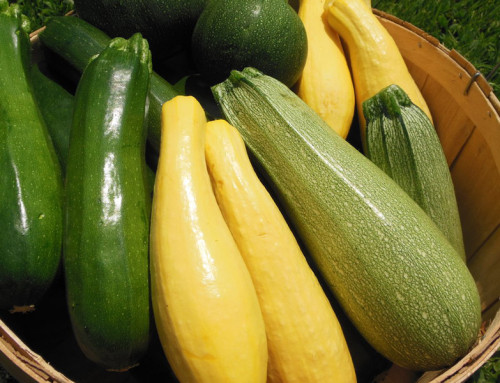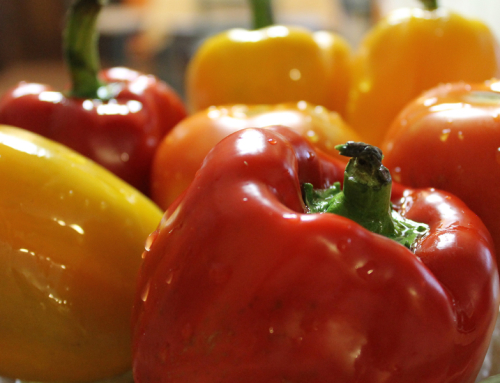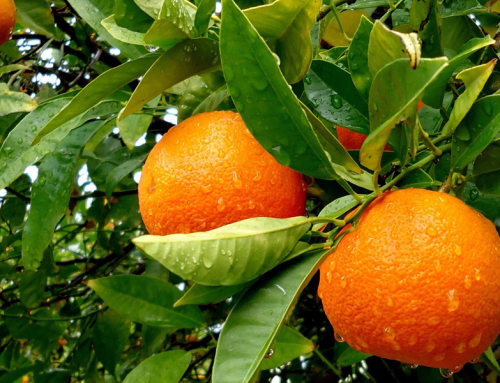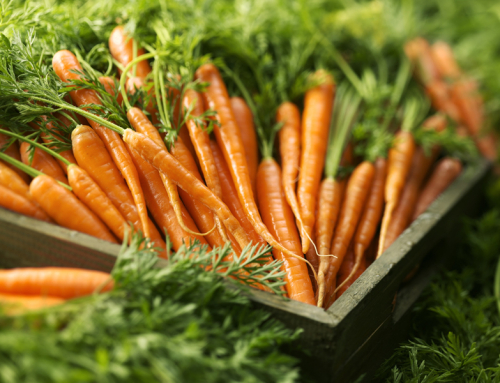- 1 whole, raw, 5¹⁄₈” long and 3″ in diameter (approx. 304 g) – 119 calories
- 1 cup, ¹⁄₂” cubes, raw (approx. 140 g) – 55 calories
The papaya is a nutrient-rich fruit that is grown in tropical regions. It is known for its medicinal properties as well as for digestive and other nutritional benefits. The fruit contains an enzyme called papain that has been shown to be useful in many food and medicinal applications. From the genus Carica of the Caricaceae family, this exotic fruit-producing plant is believed to have originated somewhere in Central America and was historically referred to as the “fruit of the angels”.
Basic Information
Papaya is grown commercially throughout many different tropical regions, mainly for its delectable, pear-shaped fruit that averages about a pound in weight. However, some fruits can be as large as 12 inches in diameter and 20 inches in length. Many small, round black seeds are encased in a special coating, leaving a hollow similar to that of a melon when removed, leaving the consumer with the tender yellow to orange to pink flesh. Although the seeds are edible, the bitter, peppery taste is not pleasant to everyone. Consumers can check the papaya for ripeness if the skin is turning a warm orange in color and the fruit gives a little when gently pressed.
Nutritional Components of Papaya
The papaya is low in fat and calories while being full of nutrients, making it a great choice for dieters and anyone who wishes to eat more healthfully. There are only about 39 calories in 100 grams of this fruit and no cholesterol. This fruit contains fiber, as well as many beneficial vitamins, most notably Vitamin C and Vitamin A, minerals, and phytonutrients to benefit overall health and wellness. In fact, 100 grams of papaya fruit have more than 100% of the daily recommended intake for Vitamin C, more than any citrus fruits.
Benefits to Health
- Digestion
The fiber, vitamins, and minerals in the papaya fruit are beneficial to the entire digestive system. An enzyme called papain aids digestion by breaking down protein into smaller molecules for better absorption by the body. Fiber helps the broken down food particles to move through the digestive tract to remove toxins and prevent constipation. These nutrients have also shown some protective benefits against colon cancer. - Eye Health
Vitamins A, C, and E are beneficial to keep vision and eyes healthy. In addition, papaya contains a strong antioxidant known as zeaxanthin that has been proven to protect eyesight and reduce the risk of age-related macular degeneration by keeping harmful blue light from entering the delicate eye membranes. - Immune Support
The powerful antioxidants and other nutrients in papaya have anti-inflammatory properties to keep the immune system functioning properly. This tropical fruits can also reduce the inflammatory response that is often seen in conditions such as asthma and certain types of arthritis. - Cardiovascular Disease
The nutrients in papaya can help to prevent oxidation of cholesterol, keeping it from clinging to arterial walls, thus reducing risk of atherosclerosis. The fiber content in this fruit may also help to lower cholesterol levels, while potassium can help to reduce heart rate and lower blood pressure. - Other Benefits
The vitamins, minerals, and other nutrients in this fruit may aid in metabolism, increase bone strength, and help in the prevention of certain types of caner.
How to Prepare and Serve Papaya
It is important to wash papaya before preparation to remove dirt and any pesticide residue. The skin is not edible and should be removed with a paring knife. Ripe papaya can be cut and served as desired. To eat as a melon, cut in half, scoop out the seeds, and enjoy with a spoon. Some people like to fill with cottage cheese or to add a dash of lemon or lime and pepper. You may choose to slice or chop papaya to eat as a snack, though there are many other ways to enjoy this exotic delicacy.
- Salads: Add chopped papaya to a favorite salad. You can top a traditional lettuce salad, create a fruit salad with papaya and other tropical fruits, or add to chicken salad. When combining with other fruits, add the papaya right before serving to prevent over-softening of other fruits.
- Drinks: Extract the juice from the papaya and serve in a glass with ice. You can also add this juice to water or tea for extra flavor and nutrition. Freeze the cubes and add to your favorite smoothie recipe.
- Salsa: Fruit salsa is an extremely popular way to use papaya. Combine these chunks with other tropical fruits, spicy peppers, and seasonings and serve with your favorite dish or as a topping for seafood tacos.
- Toppings: Fresh, ripe slices of this fruit taste great on top of chicken breast or fish fillets.
Choosing and Storing Papaya
When selecting papayas for use at home, choose those with no flaws or damage to the surface skin. If the fruit is not yet ripe, it may be stored at room temperature until the skin turns a reddish-orange color. Ripe fruit should be stored in the refrigerator to prevent over-ripening and spoilage. You can allow the fruit to warm to room temperature before eating for fuller taste.
Papaya Safety and Allergy Concerns
Papaya is considered to be a moderate cross-reactive food with latex. This means that those with an allergy or sensitivity to latex may also be allergic to papaya and vice versa.
Papayas that are green and unripe can be toxic and should never be eaten raw. However, it may be cooked and eaten as a vegetable as it is frequently used in Pacific Island and Asian cuisine.


